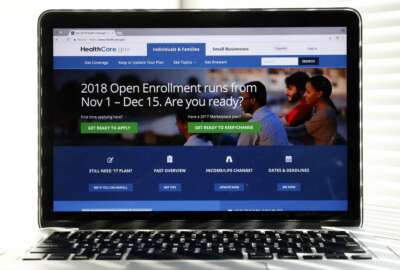
Sleepwalking through open season
Uncle Sam will spend a small fortune over the next couple of months making it easier for 2.8 million government workers to get the best health plan next year fo...
Uncle Sam will spend a small fortune over the next couple of months making it easier for 2.8 million government workers to get the best health plan next year for the fewest amount of premium dollars.
Many agencies will subscribe to an online service — Consumers’ Checkbook Guide — that will permit employees to shop, online and on government time, for the best plan or plans for them and their families. Some federal unions will also subscribe for members. The service even lets people find out which network or networks their doctors belong to, as well.
It’s a good deal. But many people won’t use it or, if they do, they won’t switch from their long-time plan even if all the numbers say they should. Only about six of every 100 enrollees change plans each open season. And most of them are younger, healthier workers who cost their plans less, enabling those plans to hold the line or actually reduce premiums. Most retirees who have much heavier medical bills are still in the same plan they belonged to when they first retired, even though premiums in those plans have gone up the most.
Walton Francis, who writes the Checkbook Guide, says many people could save $1,000 to $2,000 next year if they would switch to a less-costly but just-as-good health plan. But people, for the most part, don’t change.
The government already pays 72% to 75% of the total premium, but even with that workers and retirees will have to shell out lots of their own money for coverage. Premiums next year are going up an average of 5.6% for workers and retirees. Some of the plans are holding the line and a few are even cutting premiums.
The open season this year runs from Nov. 11 to Dec. 9. The Federal Employees Health Benefits Program is perhaps the best large program in the nation. It was designed to cover not only rank and file feds but also high level officials and the people, both elected and on staff, who literally write our laws. Nobody can be rejected because of age, occupation, hobbies, lifestyle or pre-exisiting medical conditions. The lifetime limits in each plan are high. And if you are unlucky enough to get close to that plan’s limit you have on average 29 other plans or options to choose from. People can choose from self-only, self-plus-one or family plans. And switch back and forth as their lifestyle or situations change.
With all the help, options and encouragement most people still don’t make use of open season. Many forget that health insurance isn’t the only thing involved in the open season. Workers and retirees can also enroll or make changes in their current enrollment for the Federal Employees Dental and Vision Insurance Program. And open season is the only time when they can cancel enrollment.
So the good news is that everybody in the FEHBP, from the newest, youngest employee to the 100-year-old survivor of a retiree, has an open season coming up. Most people have from 20 to 30 plans and options to choose from, including local HMOs. Nobody can be turned down for any reason. Some of the plans are actually reducing premiums, and Uncle Sam will pay the lion’s share of the premium.
The not-so-good-news: Many people should change plans for better benefits and lower premiums, sometimes both. But if this open season is like others, most people won’t bother.
Nearly Useless Factoid
By Amelia Brust
Turritopsis nutricula are known as “immortal jellyfish” because they can, upon reaching adulthood, transfer their cells back to childhood thereby giving the species an indefinite lifespan.
Source: Wikipedia
Copyright © 2024 Federal News Network. All rights reserved. This website is not intended for users located within the European Economic Area.
Mike Causey is senior correspondent for Federal News Network and writes his daily Federal Report column on federal employees’ pay, benefits and retirement.
Follow @mcauseyWFED
Related Stories





